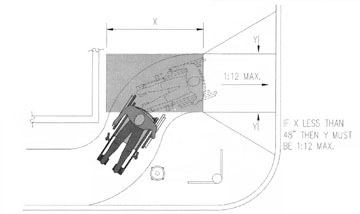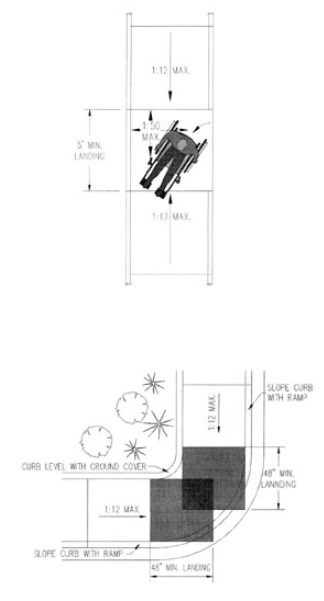Obstructions [4.7.8]
It is important that parked cars, lampposts, utility poles, and other elements placed along sidewalks not obstruct connecting accessible routes.
Space is needed at the top and bottom of ramps so that people using wheelchairs can align with the running slope and maneuver from ramps, including when making turns (which is difficult on sloped surfaces). At curb ramps, a landing provides the necessary connection to an accessible route. A landing with a minimum length of 48 inches will provide sufficient turning space. Where space at the top is less than 48 inches, side flares must have a maximum slope of 1:12 instead of 1:10 at the curb face.

Alternative designs can provide sufficient landings at ramps where space is limited, including at intersections. Perpendicular ramps that are offset from the intersection can provide level landings at the top and bottom of ramps.


User Comments/Questions
Add Comment/Question